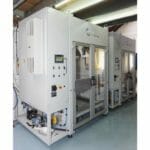Selecting the correct Heat meter for your application can be a time consuming and somewhat confusing job, with such a large array of options, different types of meters and a range of optional extras that you may or may not necessarily need. Where do you start?!
The first thing that you need to look at is what do you need for your application? Would a clamp on meter be needed or could you use an inline flow meter? Do you want to be able to read remotely? Do you need certain approvals such as RHI or MID? Is the heat meter going to be used on a MMSP, HIU project? What power supply do you need? Once you have decided on these important factors, you need to know your pipe size and flow rate. Getting these details correct in the first instance will save you a lot of time and money in the future.
Approvals – Depending on the application and the reason for installing a heat/energy meter, you may need certain approvals. Examples of approvals are; MID (Measuring Instruments Directive) accuracy approvals (ensuring accuracy, traceability and quality), government incentives such as the RHI (Renewable Heat Incentive)
Power supply – Where is your meter going to be installed? Will the meter be installed near a power supply? Will it need a battery? These decisions are crucial for obvious reasons. Battery life should also be considered. Be sure to check before you buy!
Pipe size and flow rates – Depending on the type of meter you are installing/purchasing you will have several options over the range of sizes. This may vary from the time of quotation to the time of order depending on your spec and budget, other sizes and options could possibly be suggested to suit the application to bring the costs down.
Media and debris – Looking into the media passing through the meter, particles and debris flowing through certain meters will affect the accuracy of the reading, so if you do have known foreign bodies in your system this will affect the meter you choose.
Clamp on or inline – Are you able to cut the pipework to install the meter? Will the meter remain in the system for the foreseeable future or does the meter need to be portable so it can be relocated for testing different areas for efficiency? Do you want to only measure the flow for a certain amount of time? A clamp on meter is typically going to cost more than an inline flow meter, but the installation costs will be significantly lower than an inline meter.
Remote reading/AMR (automatic meter reading) – Advanced metering systems can provide benefits for Utilities, Retail providers, Landlords and Customers. Benefits will be recognized by the utilities with increased efficiencies, outage detection, tamper notification and reduced labour cost as a result of automating reads compared to reading via manual ways. Retail providers will be able to offer new innovative products in addition to customizing packages for their customers. In addition, with the meter data being readily available, more flexible billing cycles would be available to their customers instead of following the standard utility read cycles (monthly/quarterly) of these benefits, many utilities are moving towards implementing some types of AMR solutions.
What do you need to measure and what is the purpose – Are you measuring to claim for the RHI? Do you want to check the efficiency of a system? Different meters can be advised for you depending on your needs and requirements. Bearing in mind that some approvals may not be needed, this could affect the cost. E.g. is an RHI approved meter need or would a class 3 mechanical heat meter be sufficient?
Superstatic, Ultrasonic, Mechanical or Non-Invasive
This links back to the purpose of the meter installation. What do you want to achieve? Which technology is preferred by the client? Superstatic meters use the fluidic oscillation principle whereas the ultrasonic meters use transit time technology, maybe a clamp on meter would be a more suitable choice?
Installation
It is important to check the setup id suitable for the Meter and that it has the correct amount of pipework before and after the meter to ensure accuracy.
To summarize;
Choosing the best option for you should be based on these key factors –approvals required, location of the meter, need to read remotely, media passing through the meter, power source and the fittings such as screwed or flanged and finally budget.
DMS can assist with the selection and provisioning of Metering for any Heating or Cooling Systems, including the exclusive Sontex range of SuperStatic Meters; Our range of Heat and Cooling meters (also known as Energy Meters) are all MID and RHI approved and incorporate multiple data output options; We can also offer associated products such as Pressure Independent Control Valves and other accessories.







